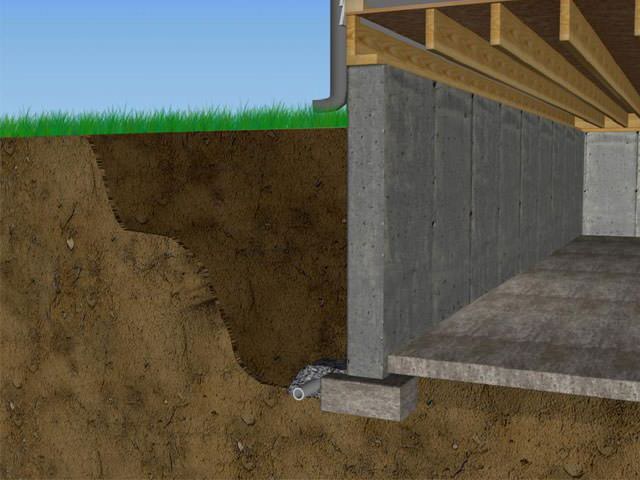Backfilling a foundation wall involves using either trench spoils or premium granular backfill material to fill in the trench from the bottom of the excavation to the desired grade above. Foundation wall backfilling under or near pavement is typically done utilizing ‘premium’ backfill which can consist of sand, coarse-graded aggregate, fine graded aggregate, or a mixture of the two. Also regardless of other influences, if a foundation backfill will occur above a perimeter underdrain system (and specifically for basements), porous premium backfill is commonly used to assist in the drainage system of guiding water quickly to the perimeter drain and to keep water away from the foundation wall.

For foundation wall trench backfill far enough away from pavement, it is more common for native spoils from the excavation to be used for backfill, so long as they are in suitable condition.

The correct way to backfill a foundation wall is by doing it in lifts of material, typically between 6-24” thick, and compacting each lift prior to placement of the next. This process keeps the trench along the foundation wall from settling over time due to loading, erosion, or other means. There are several different ways to compact the foundation wall backfill material. The most common pieces of equipment used are manual gas powered walk behind plate compactors, manual ‘jumping jack’ compactors, plate compactors attachments for a backhoe, and operated vibratory and rollers. No matter the equipment used, on highly regulated and tested projects, the engineer or inspector will typically want to be assured that the trench lifts have been compacted to be at or near the maximum dry density obtained from doing a proctor on the native soil, or the premium backfill material being used. Water is should be added to dry material to increase the efficiency of the compaction and cohesion of the backfill material.

Localities have become more particular about foundation wall backfilling operations as intermittent ‘settling’ issues can become contentious and costly operations to fix, especially when they occur long after the project was originally completed. Another consideration when backfilling and compacting a foundation wall is the strength of the wall itself. For a poured in place concrete foundation wall using standard 3000-4000psi concrete, one should typically wait at least 7 days (if not a full 28 days) for the concrete to cure before beginning backfill operations. Though in residential construction many contractors will strip wall forms and backfill as early as 2-3 days later. And in some extreme cases even the next day. Also caution must be used when backfilling and compacting foundation walls to assure the trench walls do not cave in. It is typical for the backfill crew to slope the finish grade of the backfilled area away from the wall or building next to it, to drain surface water away from the foundation.
